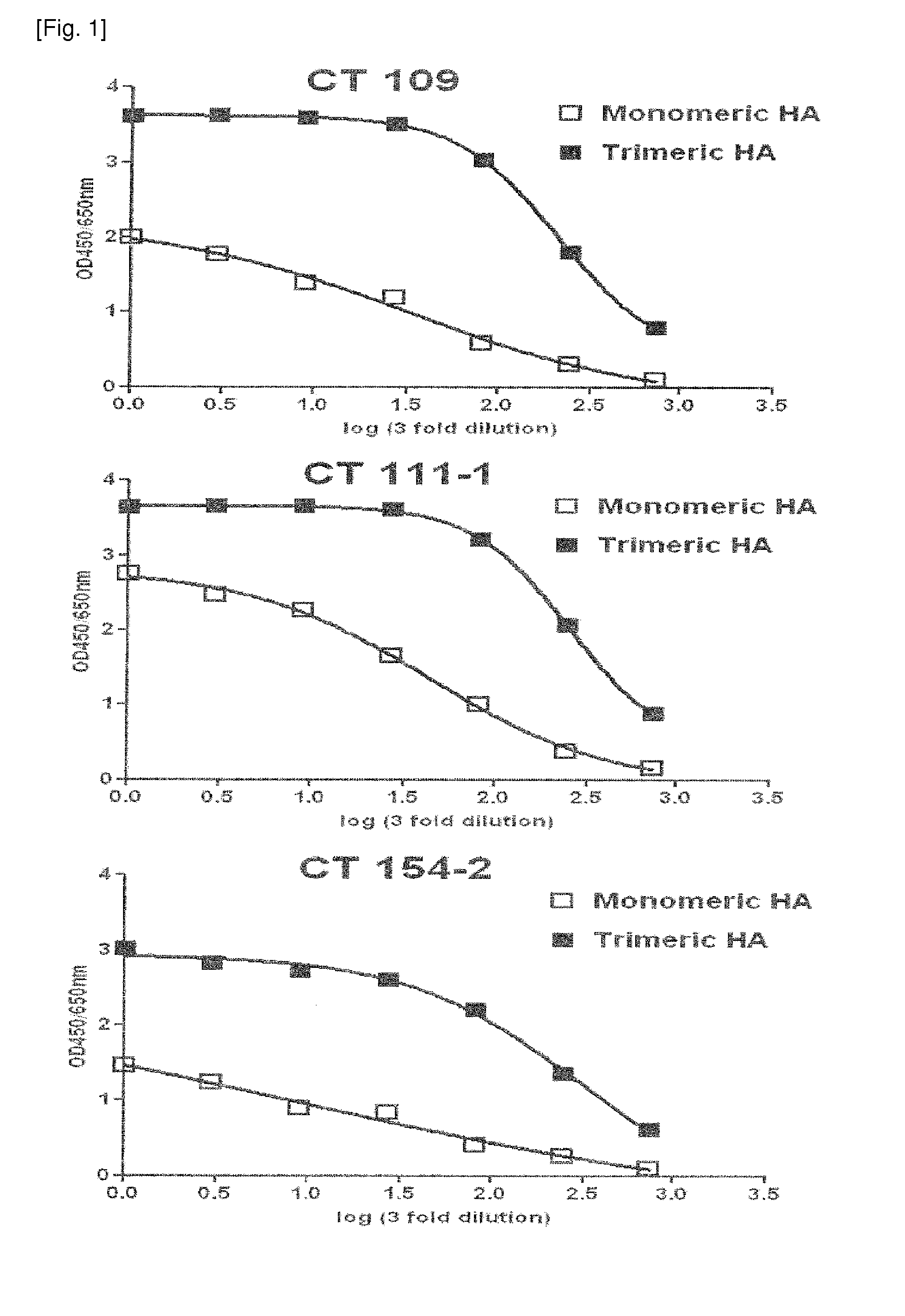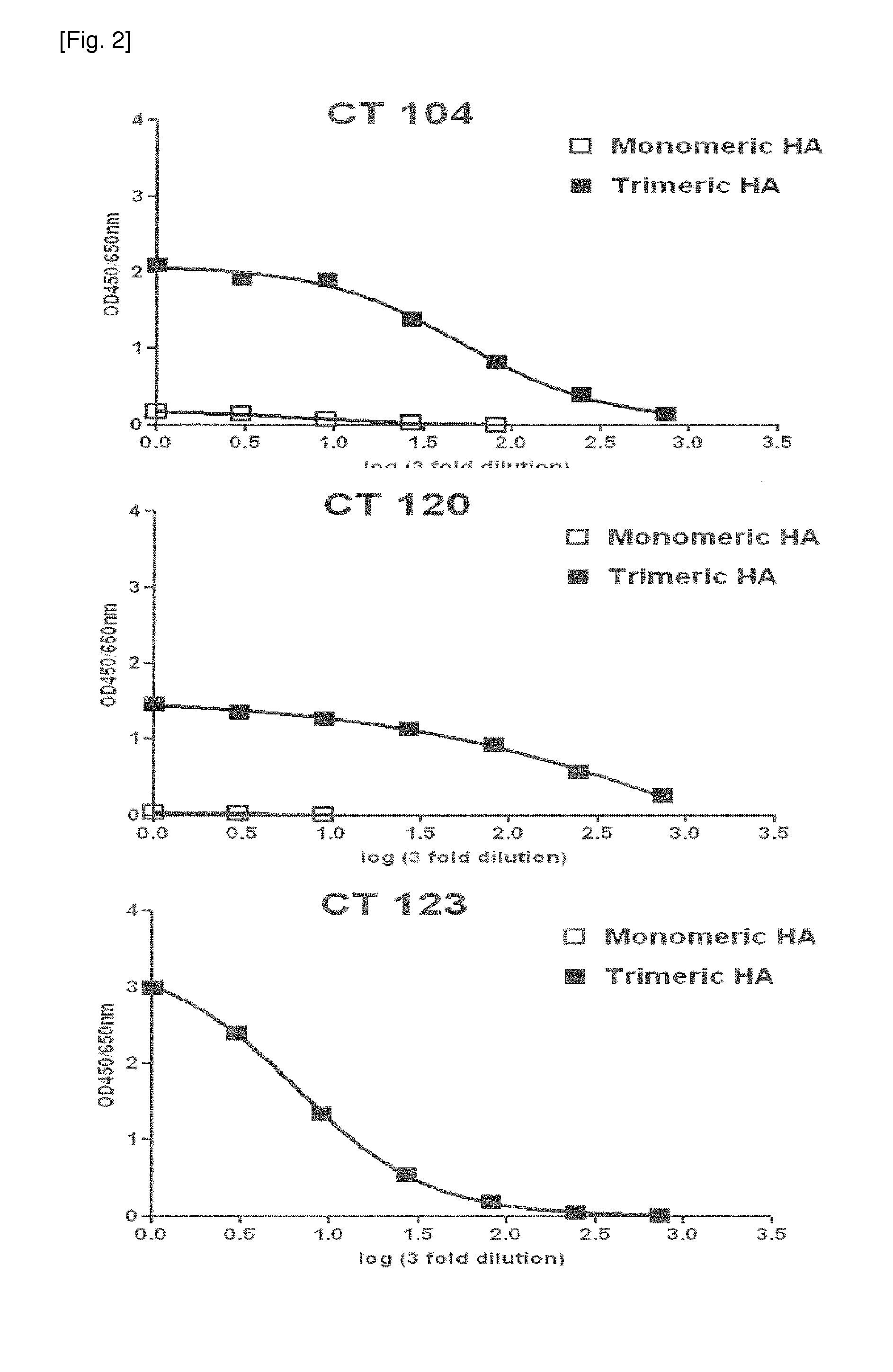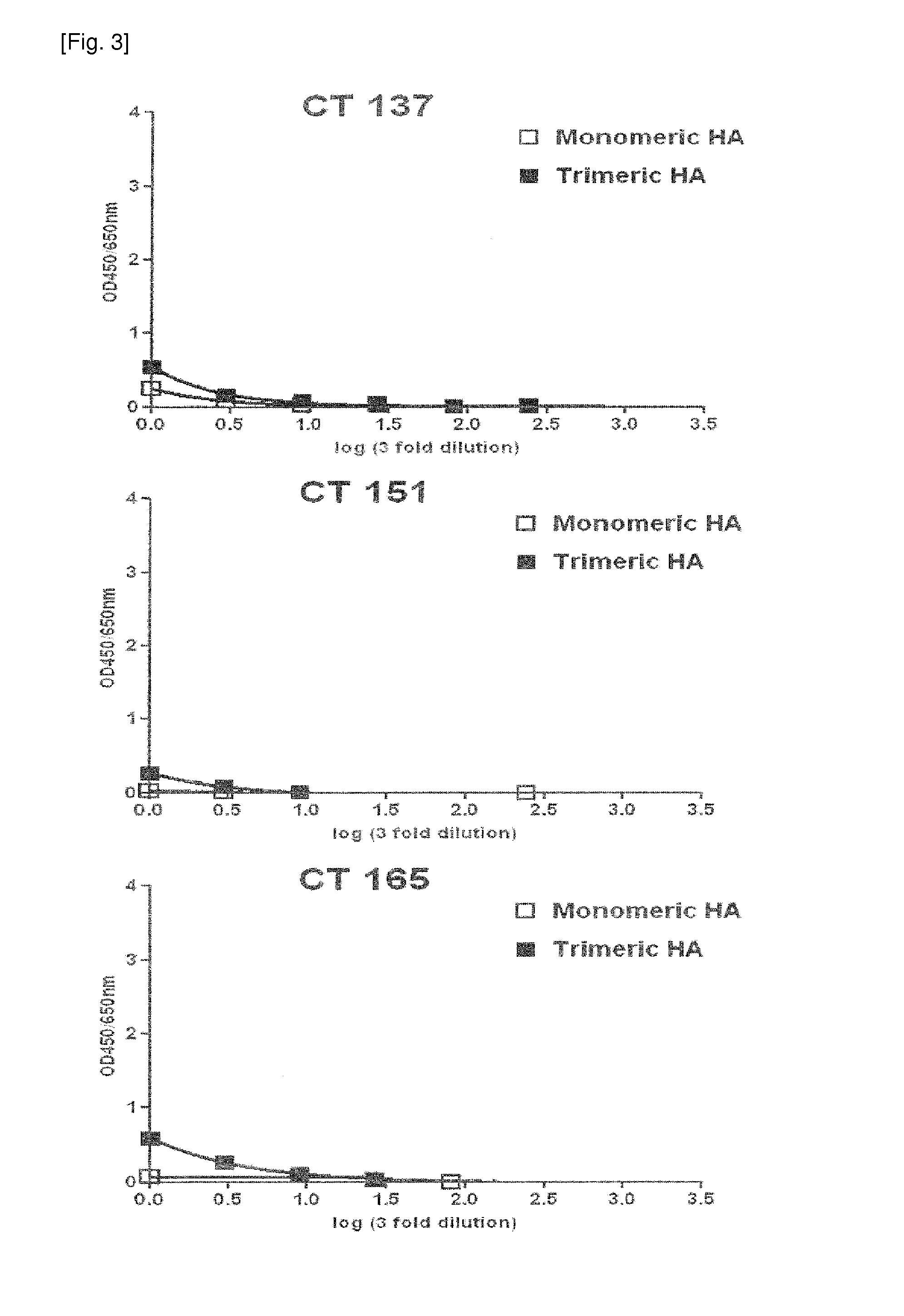Human monoclonal antibodies derived from human b cells and having neutralizing activity against influenza a viruses
a technology antibodies, which is applied in the field of human monoclonal antibodies, can solve the problems of difficult to obtain permanent immunity against influenza viruses, inefficient methods that require a lot of time, and difficulty in producing sufficient amounts of vaccines
- Summary
- Abstract
- Description
- Claims
- Application Information
AI Technical Summary
Benefits of technology
Problems solved by technology
Method used
Image
Examples
example 1
Isolation of PBMC from Blood from Patients who Recovered from Flu
[0120]A recovered patient group consisted of patient volunteers who were 2-4 weeks after confirmation of new flu infections. The volunteers were confirmed to have no influenza virus (H1N1) in their blood and had an antibody against the new influenza virus. This study was performed under the approval of the Institutional Review Board (IRB). This patients group had the following characteristics: (1) the patients were not vaccinated against seasonal flu; (2) the patients were negative for other infectious viruses, that is, HBsAg, and were negative for anti-HCV antibody and anti-HIV antibody; (3) the patients were negative for RT-PCR for the influenza virus H1N1 subtype in plasma; (4) the patients showed a titer of 1:160 or higher in serum in ELISA assays for the (monomeric) HA(H1N1) of the influenza A virus H1N1 subtype. About 100 ml of whole blood was collected from the volunteers, and peripheral blood mononuclear cells ...
example 2
Primary Screening of Monoclonal Antibodies
[0121]B cells secreting antigen-specific antibodies were screened using the method described by Jin et al. (Jin A. et al., 2009. Nat Med. 15, 1088-1092). Briefly, the PBMCs were added to each well of the prepared microarray chip at a density of one cell / well. Antibodies secreted from the single cells were confirmed by the precoated anti-human IgG antibody. Whether the screened antibody-secreting cells secreted HA-binding antibodies was examined using the labeled HA antigen by an enzyme-linked immunospot assay (ELISPOT; Sedgwick J. D., 2005, Methods Mol Biol. Vol. 302, pp. 314). The complete sequences of the heavy-chain and light-chain genes of the antibodies from the individual antibody-secreting cells were obtained by a reverse transcription-polymerase chain reaction (RT-PCR). The obtained heavy-chain and light-chain DNAs were inserted into pcDNA 3.1(+) expression vectors (Invitrogen, USA, V790-20) to prepare expression vectors producing ea...
example 3
Second Step Screening of Monoclonal Antibodies and their Production
[0122]In order to secondarily screen monoclonal antibodies having high binding affinity for recombinant HA from the 82 primarily screened antibodies, HA-ELISA was performed using monomeric HA and trimeric HA. Recombinant monomeric HA (11055-VO8H) from influenza A virus (A / California / 04 / 2009) was purchased from Sino Biological Inc. (China). The purchased monomeric HA consisted of an extracellular domain (met1-gln529) of HA comprising 10 polyhistidine residues at the Cterminus and was derived from transfected human cells. Recombinant trimeric HA (FR-180) was provided by IRR (Influenza Reagent Resource, USA). The trimeric HA from H1N1 (A / California / 04 / 2009) included a thrombin cleavage site at the C-terminus, a trimerizing domain (foldon) and six histidine residues and was produced using a baculovirus system.
[0123]The reactivity of the antibody with the HA antigen was measured by ELISA using the HA and the antibody. Spe...
PUM
| Property | Measurement | Unit |
|---|---|---|
| Density | aaaaa | aaaaa |
| Density | aaaaa | aaaaa |
| Density | aaaaa | aaaaa |
Abstract
Description
Claims
Application Information
 Login to View More
Login to View More - R&D
- Intellectual Property
- Life Sciences
- Materials
- Tech Scout
- Unparalleled Data Quality
- Higher Quality Content
- 60% Fewer Hallucinations
Browse by: Latest US Patents, China's latest patents, Technical Efficacy Thesaurus, Application Domain, Technology Topic, Popular Technical Reports.
© 2025 PatSnap. All rights reserved.Legal|Privacy policy|Modern Slavery Act Transparency Statement|Sitemap|About US| Contact US: help@patsnap.com



